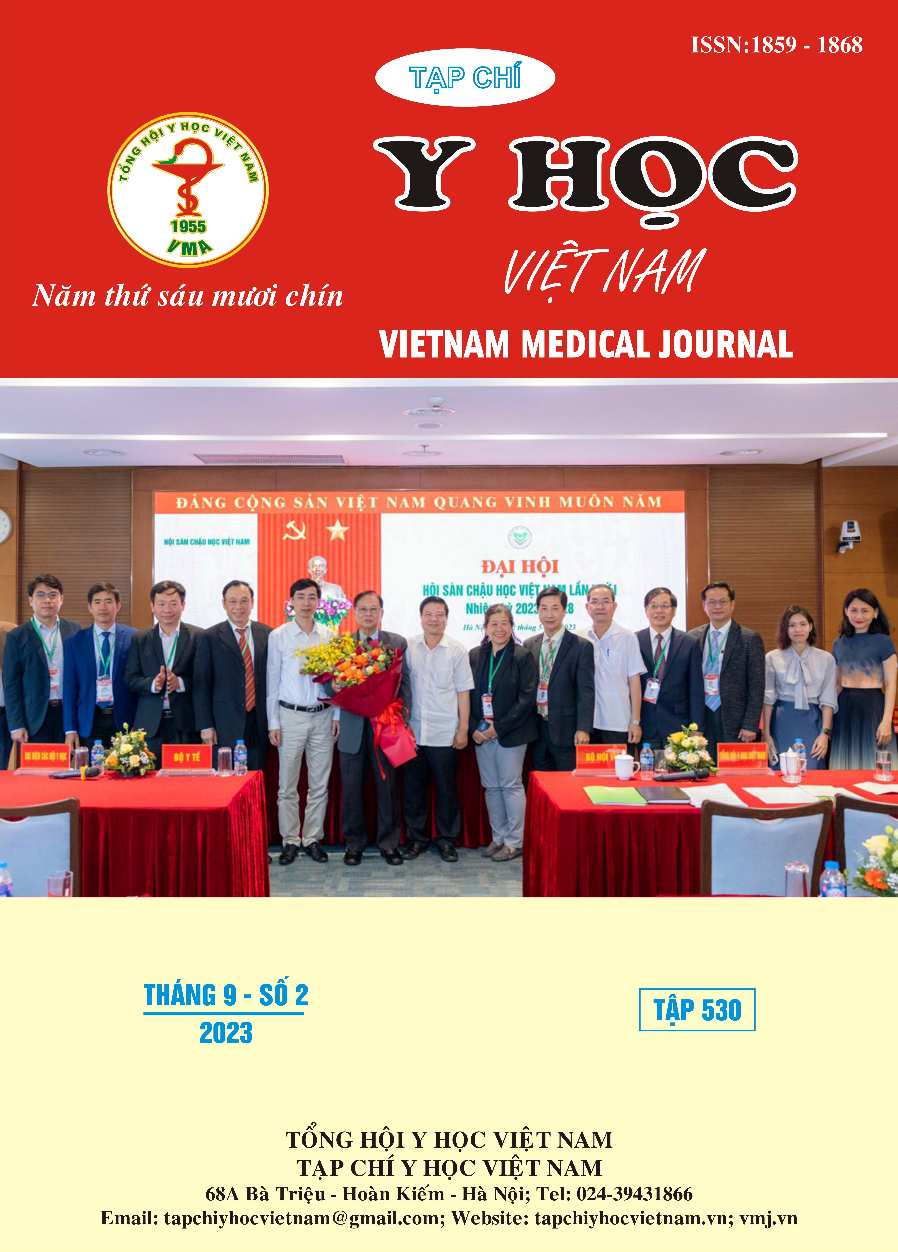A RETROSPECTIVE CASE SERIES OF 12 FOODBORNE BOTULISM AT A GENERAL HOSPITAL IN QUANG NAM NORTHERN MOUNTAINOUS REGION GENERAL HOSPITAL
Main Article Content
Abstract
Introduction: Botulism is a rare but potentially life-threatening neuroparalytic syndrome caused by a neurotoxin produced by Clostridium botulinum. In Vietnam, there have been many cases of foodborne botulism; it is typically associated with home-canned or fermented foods. Studies have shown that early diagnosis and treatment of Botulism with antitoxin was associated with shorter hospital stay and the potential mortality benefit. Objectives of the study: To describe the clinical, paraclinical, diagnosis, treatment, and mortality prognosis of foodborne botulism. Subjects and methods: We report on a retrospective case series of 12 foodborne botulism at a general hospital in Quang Nam Northern Mountainous Region General Hospital from March to April 2023. Results: There were 4 clusters of small cases all occurred in Phuoc Son district, Quang Nam province on the Gie Trieng ethnic people after eating silage salted carp containing C. botulinum toxin type E. Cases with all three clinical criteria for suspected botulism following the US Centers for Disease Control and Prevention (CDC) were met in 83.3 percent of patients. In our study, 100 percent were afebrile, 91.7 percent had at least one symptom related to cranial nerve dysfunction. Muscle weakness/paralysis was observed in 83.3% of cases with most cases associated with symmetric descending weakness. Most patients were maintenance of alertness, and lack of sensory deficits. Nonspecific gastrointestinal (GI) symptoms occured in 91.7% of cases, began within 21.5 ± 17.6 hours after ingestion of home-salted fish contaminated with botulinum toxin type E. In our study, approximately 67 percent presented with respiratory involvement (shortness of breath, dyspnea, respiratory distress or failure), severe respiratory failure was 50% and requires intubation and mechanical ventilation. Routine laboratory and neuroimaging findings in patients with botulism were normal. Routine laboratory and neuroimaging findings in patients with botulism were normal. Respiratory acidosis occurred in 25% of the individuals. Equine serum heptavalent botulinum antitoxin (BAT) was administered intravenously in 3 severe cases after 22.7 ± 2.3 hours of respiratory failure presentation; the patient improved in muscle weakness/paralysis and weaning off the ventilator after administration of antitoxin by 51.3 ± 28.3 hours and 72 ± 2 hours, respectively. The mortality rate occurred in 1 case with severe respiratory failure and no antitoxin use. The remaining cases were a complete or nearly complete recovery with return to previous level of functioning. Conclusion: Since most cases of botulism are transmitted through food, the most critical aspect of botulism prevention is proper food handling and preparation. The US CDC's clinical diagnostic criteria for suspected botulism could be helpful for clinicians to prompt consideration of botulism earlier in the course of disease.. The specificity of these three criteria is unknown, and the absence of one of these criteria does not rule out the possibility of botulism. Respiratory failure is the primary cause of death in patients with botulism, thus intubation should be considered for those patients within severe respiratory failure. Antitoxin is the main therapeutic option for botulism and should be administered as soon as the presumptive clinical diagnosis of botulism is made. Antitoxin is the main therapeutic option for botulism and should be administered as soon as the presumptive clinical diagnosis of botulism is made. Some studies also suggest that earlier administration of BAT is associated with reduced hospital stay and mortality compared with later administration
Article Details
Keywords
Foodborne botulism.
References
2. Chatham-Stephens, Kevin, Shannon Fleck-Derderian, Shacara D Johnson, et al. (2018), "Clinical features of foodborne and wound botulism: a systematic review of the literature, 1932–2015", 66(suppl_1), pp. S11-S16.
3. O’Horo John C, Eugene P Harper, Abdelghani El Rafei, et al. (2018), "Efficacy of antitoxin therapy in treating patients with foodborne botulism: a systematic review and meta-analysis of cases, 1923–2016", 66(suppl_1), pp. S43-S56.
4. Samuel Pegram P., M Stone (2022), "FACEP", Botulium.
5. Rao Agam K, Neal H Lin, Stephanie E Griese, et al. (2018), "Clinical criteria to trigger suspicion for botulism: an evidence-based tool to facilitate timely recognition of suspected cases during sporadic events and outbreaks", 66(suppl_1), pp. S38-S42.
6. Rao Agam K, Jeremy Sobel, Kevin Chatham-Stephens, et al. (2021), "Clinical guidelines for diagnosis and treatment of botulism, 2021", 70(2), pp. 1.
7. Sobel J, Tucker N, Sulka A, et al (2004), "Foodborne botulism in the United States", Emerg Infect Dis. 10:1606, pp. 1990-2000.
8. Yu PA, Mahon BE Lin NH, et al. (2017), "Safety and Improved Clinical Outcomes in Patients Treated With New Equine-Derived Heptavalent Botulinum Antitoxin", Clin Infect Dis. 66:S57.


